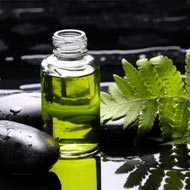- Bergamot Essential Oil
- Black Pepper Essential Oil
- Cajeput Essential Oil
- Camomile Oil
- Cedarwood Essential Oil
- Citronella Essential Oil
- Clary Sage Essential Oil
- Coriander Oil
- Lavender Essential Oil
- Rose Oil
- Eucalyptus Oil
- Fennel Essential Oil
- Frankincense Essential Oil
- Geranium Oil
- Grapefruit Oil
- Essential Oil Jasmine
- Juniper Berry Oil
- Lavandin Oil
- Lavender Oil
- Lemon Oil
- Lemongrass Oil
- Mandarin Oil
- Melissa Oil (Officinalis)
- Cypress Oil
- Aroma Essential Oil
- Aromatherapy And Essential Oils
- Avocado Oil Benefits
- Oil Healing Properties
- Essential Lemon Oil Health Benefits
- Lemongrass Essential Oil Health Benefits
- Mandarin Essential Oil Health Benefits
- Marjoram Essential Oil Health Benefits
- Massage Body Oils Health Benefits
- Melissa Essential Oil Benefits
- Essential Myrrh Oil Health Benefits
- Natural Essential Oil Health Benefits And Uses
- Neroli Essential Oil
- Niaouli Essential Oil
- Essential Oils And Uses
- Organic Essential Oils
- Patchouli Essential Oil
- Peppermint Essential Oil
- Petitgrain Essential Oil
- Rosemary Essential Oil
- Sandalwood Essential Oil
- Sandalwood Massage Oil
- Sunflower (Black) Seed Oil
- Tangerine Oil
- Tea Tree Oil Uses
- Thyme Essential Oil
- Vetiver Oil
- All Natural Oil
- Olive Oil Products
- Almond Oil For Hair,Massage,Cooking And Aromatherapy
- Best Olive Oil In The World - Reviews
- Avocado Oil
- Aromatherapy Essential Oils And Blends
- Essential Oils Aromatherapy
- Catnip Essential Oil
- Spikenard Essential Oil
- Chocolate Essential Oil
- Carrot Seed Essential Oil
- Tuberose Essential oil
- Manuka Essential Oil
- Yarrow Essential Oil
- Galbanum Essential Oil
- Linden Blossom Essential Oil
- Oregano Essential Oil
- Ravensara Essential oil
- Ylang Ylang Essential Oil
- Helichrysum Oil
- Clove Oil
- Spearmint Essential Oil
- Pine Essential Oil
- Lime Essential Oil
- Lemon Verbena Essential Oil
- How Different Are Mint Oil And Peppermint Oil?
- Vegetable Oils
Wintergreen Essential Oil
Wintergreen oil or oil of wintergreen is the common name for methyl salicylate. Nowadays, it is manufactured synthetically, but traditionally, it was synthesized from the teaberry or chickberry plant (gaultheria procumbens).
Wintergreen oil is used in a number of medical preparations, and in this article, we deal with the benefits and uses of wintergreen oil.
Origin of wintergreen oil
The American wintergreen or the checkerberry plant is a small shrub and grows to only about 3–6 inches in height. It produces bright red berries that are edible, while the leaves are generally used to make a tisane. The exact history of the use of wintergreen is not known. What is known is that Native Americans used to chew on the leaves as medicine to treat a number of respiratory tract infections. They also used to chew the leaves before a hunt, because it helped them breathe easily. Its properties to relieve aches and pains were also well known.
How to extract wintergreen oil?
Leaves of the gaultheria procumbens are first macerated in warm water. This process encourages the interaction of enzymes in the leaf to produce methyl salicylate, which is the active ingredient in wintergreen oil. Once this is done, the methyl salicylate is separated by the process of steam distillation. The resultant liquid is an ester (an organic acid mixed with alcohol), and its chemical composition is almost 100% pure methly salicylate, although trace amounts of other chemicals may also be found.
The extraction process as such is not very difficult, and there are a number of places where you can find out how to make wintergreen oil. Be careful if you are trying this though, because the oil can be absorbed via the skin which would cause an allergic reaction in individuals with Salicylate sensitivity.
Physical properties
Pure wintergreen oil is very pale yellow or pinkish yellow in color.
It has a pleasant sweetish, minty, medicinal odor.
Benefits
Wintergreen oil has been used for generations for topical application to treat aches and pains. Other benefits include:
- It is very good as a rubefacient when used topically
- It has analgesic properties
- It is a good antitussive or cough suppressant
- It works very well as an antiseptic agent
- It is a good carminative
- It is considered a galactagogue (something that promotes lactation in mammals)
Therapeutic Applications
Wintergreen oil has a number of uses, though it is most commonly used as a pain reliever. Some of the common conditions that wintergreen oil can be used for are:
- Arthritis
- Gout
- Fibromyalgia
- Neuralgia
- Muscular aches/sprains
- Rheumatism
- Tendonitis
- Nasal congestion
- Muscular spasms
There are other uses to which wintergreen oil is used for such as digestive problems and an irregular or lack of periods. It is almost never used in its concentrated form and is diluted in other oils and then used.
Wintergreen oil blends well with:
- Witch hazel oil
- Thyme oil
- Black pepper oil
- Eucalyptus oil
- Ginger oil
- Arnica oil
Precautions
Since wintergreen oil is safe in the small quantities that it is used, there is a mistaken impression that wintergreen oil is safe in all quantities. This is false. Wintergreen oil is very toxic and can prove fatal in quantities as small as 4 ml or a tablespoon. Moreover, it is not necessary to ingest wintergreen oil for it to prove fatal. There have been documented cases where liberal topical application of the oil has proved fatal. In fact, the FDA has issued guidelines that products should not have concentrations of more than 5% wintergreen oil, and that if the concentration is higher, it is necessary that the bottle should have a printed warning. Also wintergreen oil is an emmenagogue, which means that it promotes blood flow to the pelvic region. This is dangerous for pregnant women because it can cause miscarriages. The oil needs to be kept out of reach of children as their lower body weight makes even smaller quantities fatal.



